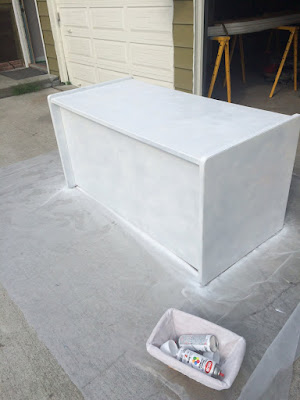Enjoying his new sandbox with his cousin
Earlier this summer I made a super easy
sandbox for my 2-year old to play in with his "diggers" and shovels. My
goal was to make the backyard a really fun place where he could play and
be entertained so that maybe, just MAYBE, I could read my novel outdoor
in the sunshine in relative peace.
At
Lowes I found this 4'x4' raised garden kit in a box consisting of 4
plastic boards, hinges for the corners and 4 stakes to secure it into
the ground. After some 6th grade math that hurt my brain, I figured I'd
need 9 bags of "Play Sand" which, apparently is a commonly stocked thing
and it's meant for sandboxes. Who knew!
Just remember when buying bags of play sand -
width times height times depth equals volume... I think?
I also bought 4 red, resin-coated pieces of
rebar (sold as garden stakes) that were about 5 feet long. I thought
it'd be cool to use them to string some fiesta flags around the edges of
the finished sandbox.
At
home, I assembled the frame according to directions using a drill to
attach the corner hinges and a rubber mallet to pound the stakes into
the ground. I placed it right on top of the grass. Then I schlepped 2
bags of sand at a time with a wheelbarrow from my car to the backyard,
sliced them open and dumped away. A bit of raking evened out the sand
and the stakes and flags (attached with zip ties) gave it a festive
flair.
When Alexander woke up from his nap I hurried him outside to see and he exclaimed, "A beach!" He loves it and has been playing in it all summer. His favorite thing now is to write numbers and letters in the sand and then "erase" them.
PROJECT REFLECTIONS
Total cost: $135.00
$90 for raised bed kit, $45 for 9, 50-pound bags of play sand
Easiest part: getting a Lowes employee to help me load up the sand bags into my cart and then again into my car.
Hardest part: I guess schlepping the sand bags and dumping them out. So heavy.
What I'd do differently next time: Figure out a better way to attach the flags.
What I learned: You really DO use that 6th grade math when you grow up!
















